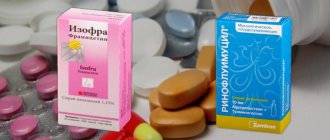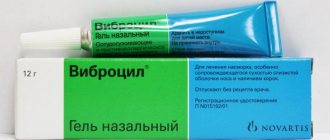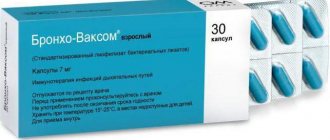A runny nose is always unpleasant, since along with it comes a lot of unpleasant symptoms, decreased performance and the ability to function normally, headache, weakness, irritability, and a feeling of fatigue. The usual color of nasal discharge is clear, whitish or yellowish.
When they acquire a green tint, this indicates a stagnant inflammatory process and the presence of infection. But sometimes, after blowing their nose, people freeze in shock - the snot turns out to be a rich yellow or orange hue. Although the color is disconcerting, such discharge is not always a symptom of something very dangerous or complex.
If a runny nose of such an unusual shade appears, you should definitely consult a doctor to make a correct diagnosis and rule out diseases that require complex, deep treatment, for example, sinusitis or eustachitis.
Causes of orange discharge
Orange snot from the nose is a general concept, as its shade can vary from light yellow to brown. For a specialist, the shade of mucus already provides a lot of information for making a diagnosis. The reasons for orange discharge may be as follows:
- Violation of the integrity of the capillary walls. These vessels can burst when there is a jump in blood pressure, strong nose blowing, or sudden sneezing. Blood flows out of the capillary, so the fluid from the nose becomes rusty in color.
- Inflammatory process in the sinuses. As a rule, it is provoked by bacterial microflora. In such a situation, urgent therapy with antibacterial agents is required to avoid serious complications.
- Being in a room with too dry air. The nasal mucosa dries out, which causes capillaries to burst and the mucus to change in color.
- When you have a cold, rhinitis, or runny nose, a large number of bacteria accumulate in the nasal cavity; they die under the influence of the immune system, which causes a change in the color of the discharge.
- Changes in the color of mucus can be provoked by: acute rhinitis, sinusitis, adenoiditis, “fetid runny nose,” neoplasms or a foreign body in the nasal cavity.
Important! If nosebleeds occur without obvious reasons for this, then this is a reason to visit a doctor to find out the cause.
The problem of the appearance of bright snot should not be a concern if it appears once, but if it occurs frequently, it is necessary to find out the cause and take measures to eliminate it.
Diagnosis of pathological processes
The first stage of diagnosis to identify the etiology of orange discharge from the nasal passages is to interview the patient and examine him. It is necessary to find out when the discharge became this color, what general changes accompanied this situation, as well as how exactly the snot comes out of the nasal passages and how a person blows his nose. Sometimes, after sharply blowing your nose, pink liquid may come out behind the orange mucus, which is evidence of injury to the capillaries.
However, in most cases this is not enough; the following auxiliary diagnostic methods come to the aid of the doctor:
- anterior and posterior rhinoscopy;
- laboratory blood tests;
- ultrasound diagnostics;
- radiography;
- computed tomography, MRI.
During rhinoscopy, an otolaryngologist can determine the presence of swelling of the mucous membrane of the nasal cavity, curvature of the septum between the nasal passages and other anatomical defects, and assess the patency of the nasal passages. This procedure also clearly visualizes the presence of mucus in the nasal cavity, its quantity and nature. A general blood test and skull x-ray are used for more serious diseases, for example, sinusitis.
Important! If there is discharge from only one nostril, then an X-ray examination should be performed using computed tomography if necessary. The procedures exclude the presence of a tumor-like neoplasm, polyp, foreign body or other cause of obstruction in one nasal passage.
Complications
If the severity is incorrectly assessed and inadequate treatment is carried out for the condition that caused the constantly flowing orange discharge, then the following serious complications can occur:
- sinusitis;
- inflammation of the meninges with the development of encephalitis, meningitis or meningoencephalitis;
- sepsis.
Therefore, the appearance of orange mucus from the nose is a good reason to immediately visit a doctor.
Orange nasal discharge in children
Every mother is familiar with the situation when she has to deal with a runny nose in her baby. If they are transparent or yellow-green in color, then this indicates the presence of an inflammatory disease that the body is trying to fight. But if orange snot appears, then you need to look for the cause. There may be several of them:
- The cold is in its final stages; the baby’s immune system has coped with the infectious agent by producing antibodies.
- Brightly colored snot may indicate a chronic pathological process, for example, sinusitis or purulent inflammation.
- The appearance of orange discharge from a child's nose can tell the doctor that there is a viral infection.
- Otitis media, sinusitis, and whooping cough are common in young children, which can also cause changes in mucus color.
- When treating infectious pathologies, the doctor prescribes vasoconstrictor drops, and these drugs are often the culprits in the appearance of yellow snot, especially if you overdo it in therapy.
- The presence of a cough and yellow discharge indicates that the disease is entering an acute phase in children. A yellow-brown snot in a child must be treated, because it may indicate scleroma or ozena.
If, during a cold, there is no improvement in the condition on days 4-5, but, on the contrary, the temperature rises and the color of the secreted mucus changes, then this is a reason to urgently visit a doctor.
Prevention
In order to prevent the occurrence of recurrent sinusitis, a sign of which is orange discharge, the following preventive measures must be taken:
- strengthening the body’s immune system through a healthy lifestyle, sports, and hardening;
- frequent spending time outside, walking;
- regular ventilation of premises;
- maintain the required temperature and humidity in the living room;
- balanced diet with the presence of important vitamins and microelements;
- moisturizing the nasal mucosa with saline solutions.
If nasal discharge of any alarming color appears, consultation with an otolaryngologist is necessary.
Only an ENT doctor will be able to make the correct diagnosis and begin the necessary therapy, preventing many possible complications and repeated cases of pathology from developing.
Yellow-red discharge in adults
Snot in adult patients is most often caused by colds. These secretions signal the good functioning of the immune system, which is actively fighting infectious agents. The appearance of orange snot from the nose in adults can be caused by the following reasons:
- Improper nose blowing, which leads to rupture of capillaries. You may even experience a nosebleed.
- A change in mucus color may also indicate an infection. This means that we can conclude that the body entered into a fight and began to produce neutrophils to eliminate the pathological process.
- If mucus of a suspicious color flows from just one nostril, this may indicate inflammation of the maxillary sinuses.
- When treating a runny nose, Protargol is often prescribed, which turns the mucus a brownish-yellow color.
- Smoking or taking drugs can cause a change in the color of snot in adults.
- Workers in hazardous industries and hot workshops may find orange-colored snot.
Other reasons
Nosebleeds that cause your snot to appear orange or pink can occur for the following reasons:
- weak tone of the capillary walls;
- disrupted process of mucus secretion from the nose (congestion), which is characteristic of sinusitis, adenoiditis and other ENT diseases;
- mechanical damage to blood vessels;
- improper nose blowing;
- blood pressure surges.
In addition to the above-mentioned causes of nosebleeds, damage to blood vessels in the nasal cavity can occur as a result of improper cleaning of the nasal passages and taking certain medications that affect blood circulation.
There is another reason why a person may secrete orange mucus from the nasal passages - this is tobacco abuse. Initially, heavy smokers develop thick yellow mucus as a result of the mucus being stained by nicotine. This substance has a negative effect on the walls of blood vessels, which can cause them to burst. This causes the appearance of this disease. If a person has a cold or flu, and he does not smoke or abuse vasoconstrictor drugs, the appearance of orange snot indicates the addition of a bacterial infection. It would seem that there is nothing dangerous in it and it can be easily cured with antibiotics.
But when exposed to certain factors (decreased immunity, dry indoor air, etc.), infectious processes begin to rapidly progress and spread to the maxillary sinuses. Against this background, sinusitis and sinusitis begin to develop.
The appearance of orange snot is not the main factor that indicates the development of this disease. These include other symptoms (headache, high temperature, chills, etc.), in the absence of which there is no need to talk about sinusitis or sinusitis.
Methods for treating orange snot
If the means used do not bring relief, the condition only worsens, then a visit to an otolaryngologist cannot be avoided. After the examination, the doctor will prescribe effective therapy, because the accumulation of pus in the maxillary sinuses, which often occurs in the presence of yellow-red snot, is fraught with inflammation of the meninges, as well as the development of sepsis.
Treatment of orange discharge involves:
- drug therapy;
- physiotherapeutic procedures;
- use of traditional medicine recipes.
The best results are usually achieved with an integrated approach to therapy.
Use of drugs for treatment
When nasal discharge turns orange or red-brown in color, serious therapy is required. Treatments may include:
- Vasoconstrictor drugs. These include “Naphthyzin”, “Rinazolin” and others. These can be either drops or sprays.
- Antiviral drugs if the cause is ARVI.
- To exclude an allergic reaction of the body to drugs, antihistamines are prescribed.
- To combat a bacterial infection, antibiotics are indicated. Ceftriaxone, Ofloxacin, Amoxiclav and others have proven their effectiveness.
Important! It is strictly forbidden to use antibiotics to treat a runny nose at your own discretion. You should immediately consult a doctor who will determine the dosage and treatment regimen.
Physiotherapeutic procedures
Physiotherapeutic procedures may be prescribed to assist drug therapy. The doctor will explain how they will help in treatment. The following procedures will help cure the pathology faster:
- electrophoresis on the nasal sinuses;
- ultrasound therapy;
- inhalation;
- mud treatment: mechanical, temperature and chemical effects are simultaneously carried out;
- rinsing the sinuses with saline;
- Diadynamic therapy has an excellent analgesic effect and relieves inflammation well.
If you follow your doctor’s recommendations and combine drug treatment with physiotherapeutic procedures, you can defeat the disease much faster.
Therapeutic measures
First of all, it is necessary to find out the causes of brown rhinitis, as well as why the snot appeared in the first place. To do this, you will need to consult an experienced specialist. The doctor will find out what nature the runny nose has and select the appropriate treatment regimen.
Vasoconstrictor drugs
It is necessary to use this type of medicine only if a child or adult has a very stuffy nose.
Ideally, instillation should be done before bedtime or rinsing the nasal sinuses with medicinal solutions. If you do not unblock nasal breathing before the procedures, you are unlikely to achieve a significant result.
Effective drugs with a vasoconstrictor effect include:
- Naphthyzin;
- Xymelin;
- Nazivin;
- Galazolin.
Nasal rinsing
Most likely, your doctor will advise you to perform this procedure. Washing can be done using marine solutions from the pharmacy:
- Aquamaris;
- Physiometer;
- Humer;
- Aqualor;
- Dolphin.
The washing technology remains standard. Draw the medicine into yourself so that it comes out of one nostril and enters the other. This method can effectively cleanse the nasal cavity of excess mucus.
If you can’t get to a pharmacy, you can prepare a saline solution at home. For 200 ml of boiling water you will need a teaspoon of sea or kitchen salt. The frequency of washing should be at least 5 times a day.
Disinfectants
Bactericidal therapy for children and adults will not interfere at any stage of the course of sinusitis. Protargol nasal drops have a powerful effect. Silver particles in its composition actively destroy painful microflora in the nasal mucosa.
If you need to help yourself urgently, but you can’t get to a doctor yet, use sea buckthorn oil. It also has a bactericidal effect, but is a safer analogue of the above drugs.
Antibacterial treatment
In the case where the snot has a brown tint and the patient has an elevated body temperature, broad-spectrum antibiotics may be needed. You can also find out about the addition of a bacterial infection from a clinical blood test of the patient. The dosage and duration of antibiotic treatment is determined by the attending physician.
The most popular drugs are:
- Ceftriaxone;
- Cefotaxime;
- Azithromycin;
- Asicin.
Homeopathic therapy
If sinusitis has not yet become advanced, then you can try using homeopathic remedies. Such preparations contain exclusively natural ingredients and plant extracts.
They help stop the inflammatory process and also activate the body’s immune defense to the maximum. However, when consuming medications you need to be extremely careful, because allergies to plant components are possible.
The most common homeopathic tablets are:
- Coryzalia;
- Sinupret;
- Cinnabsin;
- Rumex;
- Gelsemin.
Surgery
This method should be used if the patient’s pain progresses and the temperature does not go down. In this case, it can be assumed that sinusitis develops with complications. If the suspicions are confirmed, the doctor will refer the patient for a puncture of the maxillary sinuses.
Brown snot in a child or adult is the main symptom of such a dangerous disease as sinusitis. Brown snot may also indicate a common cold. Despite the similarity of these ailments, they require radically different approaches to treatment. For this reason, it is necessary to accurately verify the diagnosis before taking therapeutic measures.
Only an otolaryngologist can cope with this task. In some cases, getting rid of a runny nose due to sinusitis is only possible through surgical intervention. If the puncture is not made in time, the inflammation can spread to neighboring organs and tissues.
Green or yellow-green color of runny nose
Let's start with the fact that a healthy adult does not have snot at all.
Transparent mucous secretions only moisten the nasal passages and do not come out. The nose begins to “snotty” when there is hypothermia, exposure to external irritants, or when a person “caught” some kind of infection. Initially, the snot is liquid, like water, absolutely transparent and flows very abundantly. This is a normal protective reaction of the body - the nose tries to remove the infection or compensate for the irritating effect on the mucous membrane, intensively moisturizing it. If a runny nose is of an allergic nature, the discharge remains clear and is often accompanied by swelling.
https://www.youtube.com/watch?v=sF_FkQ55LYQ
When pathogenic microorganisms are present in the upper respiratory tract, they actively multiply, and the work of the entire immune system is directed to fight them. The snot becomes more viscous to make it even more difficult for the infection to spread, and its color gradually changes. The presence of viruses or fungi gives them a yellowish color, and pathogenic bacteria give them a greenish color.
Reddish tints in snot appear in cases where small capillaries in the nasal cavity are damaged. Moreover, the more damage, the more intense the red or brown tint. Often there are small bloody clots in the discharge. Such snot may have nothing to do with diseases of the upper respiratory tract, but be caused by completely different reasons.
Only an experienced doctor can determine exactly what the color of snot in adults indicates in each specific case, by doing the necessary tests and comparing the accompanying symptoms. A runny nose in itself is not a disease and you can fight it only by completely eliminating the cause that caused it.
The color of a runny nose can be different, but it indicates a certain process in the nasopharynx and paranasal sinuses. Rhinitis can be the onset of chronic or allergic diseases of the nasopharynx. The color of snot can be transparent, white, yellow, green, brown.
You should know that snot performs a protective function, preventing the harmful effects of pathogenic microorganisms when they enter the nasopharynx. What color should a healthy person's snot be? Nasal discharge in the absence of a pathological process in the nasal cavity should be transparent in color and of medium consistency. At the same time, there should be very few of them so that the person does not experience discomfort.
The transparent color of snot during a runny nose can also be due to allergies. Also, such discharge occurs at the initial stage of development of a viral disease. In this way, the body tries to get rid of pathogenic microorganisms - viruses, bacteria and allergens. The amount of mucus in this case is significantly greater than in the normal state of the human body; it also differs in consistency: the snot is quite liquid, almost like water.
You can clearly see in the photo what snot is like with sinusitis: more often they are yellow or yellow-brown, which indicates a purulent process. However, do not forget that there are several stages of sinusitis, each of which is characterized by a certain color of nasal discharge.
According to experts who know what snot is like with sinusitis, focusing on this sign, you can determine the nature of sinusitis and its further development. Thus, an experienced otolaryngologist will be able to avoid a number of complications with sinusitis. A white runny nose with sinusitis appears when there is no pus in the discharge. In principle, it may not appear if a person promptly notices changes in his body caused by the inflammatory process.
A green or yellow-green color of a runny nose indicates that an inflammatory process is actively developing in the nasopharynx. Due to the admixture of pus, the mucus may soon turn brown. Green mucus from the sinuses is often released when there are inflammatory processes in the lower respiratory tract.
Sometimes green mucus discharged from the nose can indicate much more serious and dangerous diseases than a common runny nose or even sinusitis. Pneumonia and bronchitis often present with a runny nose with green mucus. At the same time, it leaves the bronchi during coughing.
Judging by the color of nasal discharge during allergies, they can easily be mistaken for a sign of a cold at the initial stage of its development. What color is snot for allergies and how to distinguish it from a cold? At first the symptoms are the same:
- nasal congestion;
- copious clear discharge from the nose;
- itching and burning, dry mucous membrane.
In a medical facility, it is not difficult to determine the type of runny nose; a specialist, when examining the mucous membrane of the patient’s nasal cavity, will immediately make an accurate diagnosis. You can find out on your own whether rhinitis is caused by a cold or an allergy. In addition to mucous transparent discharge from the nasal cavity, the type of disease can be recognized by the following signs:
- High body temperature, weakness and a feeling of body aches occur only when a cold develops. A sore throat is also not a characteristic sign of an allergy.
- Itching and redness of the mucous membrane of the nose and eyes during a cold are extremely rare, but for allergies they are eternal companions.
- The first signs of a cold are liquid, clear discharge from the nose, usually appearing in the morning and at night. A runny nose due to allergies usually occurs immediately after contact with the allergen.
- If you start treating a cold in a timely manner, it will go away within a week. An allergy will bother a person for the entire period of contact with the allergen.
The color of allergic snot also depends on what caused it. For example, a bright yellow runny nose occurs when pollen from flowering plants gets into the nasopharynx. The consistency of such discharge resembles water.
A yellow runny nose is a common phenomenon that occurs with many nasal diseases. This staining of mucus indicates an infectious process occurring in the nasopharynx. Most likely, the disease is in an advanced state and has already reached a late stage of development. Sometimes there is a runny nose that is orange in color, which indicates that pollen of the same color has entered the respiratory tract. Orange mucus may also be due to a small amount of blood. This happens when a person blows his nose hard and for a long time.
It often happens that the discharge was initially yellow, and then its color becomes more intense. If the brightness of the discharge decreases, it is generally accepted that the person begins to recover.
Some experts say that yellow nasal discharge indicates the final stage of the disease. The mucus turns yellow due to dead bacteria and white blood cells. Sometimes this is indeed the case, but not in the case of the development of sinusitis, sinusitis and other sinusitis: this color of mucus only indicates the active development of the inflammatory process.
This color of snot occurs in many ENT diseases, especially at the beginning of the pathological process. Adenoid vegetations, polyposis, fungal infections of the nasopharyngeal mucosa, allergic and viral runny nose are manifested by white snot.
Such a variety of causes requires the right approach in each individual case, since, most likely, we are talking about a prolonged runny nose. With white snot, as a rule, there is no sneezing or tickling in the nose. The mucus has a fairly thick consistency. Depending on the cause of the runny nose, treatment is prescribed.
The appearance of yellow snot is a signal of deteriorating health and that there is definitely an infection in the body. Especially if they appeared immediately after clear snot. Such a signal cannot be ignored, since it indicates the onset of purulent processes in the nasopharynx or a more serious inflammatory process.
REMEMBER! The thicker the snot and the brighter its color, the more serious and active the inflammatory process in the body!
If the snot becomes more saturated in color, this indicates a new source of inflammation. And vice versa, if it dims and brightens, it means that the inflammatory process is decreasing, and this is the beginning of recovery. If a child has yellow snot, it is not recommended to carry out treatment independently, without examination by a pediatrician or ENT specialist.
https://www.youtube.com/watch?v=YTVCxFsw_DU
The nasal mucosa is a whole network of small vessels. If a child picks his nose unsuccessfully or for a long time, it can (and most likely) will lead to minor damage and, as a result, bleeding from the nose. Overexertion, frequent nose blowing or dry mucous membranes also lead to the appearance of bloody snot.
In some cases, bloody snot indicates serious illness, but it is necessarily accompanied by other symptoms, not just snot. Therefore, I will not scare impressionable mothers with these diseases.
The color of mucus discharged from the nose is an important diagnostic sign. If the snot is brown, what does this mean, it is better to ask an ENT specialist, since only a doctor can accurately determine the cause of its occurrence. However, before visiting the doctor, what causes this phenomenon.
The main reasons are:
- presence of blood;
- smoking;
- fungal infection of the mucous membranes of the nasal cavity (mycosis);
- the presence of dried crusts of a dark color, which is typical for ozena and scleroma;
- chronic inflammatory process in the paranasal sinuses.
The most common type of sinusitis is sinusitis. With this disease, there is a focus of infection in the maxillary sinuses. The pathology can be acute or chronic.
Purulent snot
Obvious suppuration always indicates a bacterial infection. In what situations does this phenomenon occur most often:
1
Sinusitis or frontal sinusitis. People often wonder what color the snot is when they have sinusitis. It depends on the stage of the disease and the pathogen. So, with odontogenic maxillary sinusitis, they smell like pus. And with a bacterial infection, snot with pus is released from a person so abundantly that it flows from both the nostrils and the throat.
2
Colds and viral infections. The second most common cause of purulent discharge. In this case, the patient is worried about fever, cough, weakness and other symptoms of intoxication.
3
Ozena (fetid rhinitis). During this atrophic process, characteristic purulent-yellow crusts with an odor appear in the cavity, which is felt by both the person himself and the people around him.
Important
One of the causes of this symptom is cancer of the nasopharynx or sinuses. Moreover, in the early stages of the disease there are no other manifestations, except for such periodic specific mucus, which is not associated with either a cold or infection.
Treatment methods
The treatment regimen depends on the type of runny nose and its stage of development. For allergic rhinitis, in addition to the basic methods of eliminating symptoms and facilitating nasal breathing, you can prescribe drugs that block the production of histamine. If the runny nose is of bacterial origin, the main treatment is the use of antibacterial medications in the form of local nasal drops.
Vasoconstrictors
To eliminate the symptoms of nasal congestion, the doctor may prescribe vasoconstrictors if, without their use, treatment with antibiotics or antiseptics will be ineffective.
Independent and uncontrolled use of such drugs leads to disruption of vascular innervation and the development of chronic runny nose. Some combination medications contain both antiseptics and vasoconstrictors, so you should consult your doctor before using them.
Saline solutions
The main methods that allow nasal mucus not to lose its renewing and protective abilities are moisturizing the nasal cavity with saline solutions, as well as following recommendations for maintaining climate conditions in the room. When treating a runny nose in a child, the mandatory instructions are to drink plenty of fluids, ventilate the room, humidify the air, and rinse the nose. Improper hygiene of a child’s nasal cavity can cause cracks in the mucous membrane, which lead to nasal secretions turning orange. An aspirator should be used especially carefully to remove mucus from a child’s nose, which, if handled carelessly, provokes rupture of blood vessels, which is why nosebleeds occur.
To strengthen the vessels and capillaries of the submucosa, it is recommended to get rid of the smoking habit and use moderate cardio during the recovery period. Before using any procedures aimed at combating rhinitis, be it heating, rinsing with saline solution or folk remedies, you should consult with your doctor about the advisability of such a technique in your particular case.
The nasal mucosa in healthy people continuously performs its functions, producing mucin secretion, which plays a protective role. Thanks to it, clear liquid mucus is formed in moderate quantities , preventing the penetration of bacteria and viruses into the nasal cavity .
A change in the thickness, volume and color of the secreted secretion indicates that a bacterial infection has occurred , neutralizing which immune proteins color the mucus in different shades. In particular, with certain pathologies, green, yellowish and even orange snot may appear. And, before starting to treat the disease, it is necessary to identify the cause of this type of complication.











